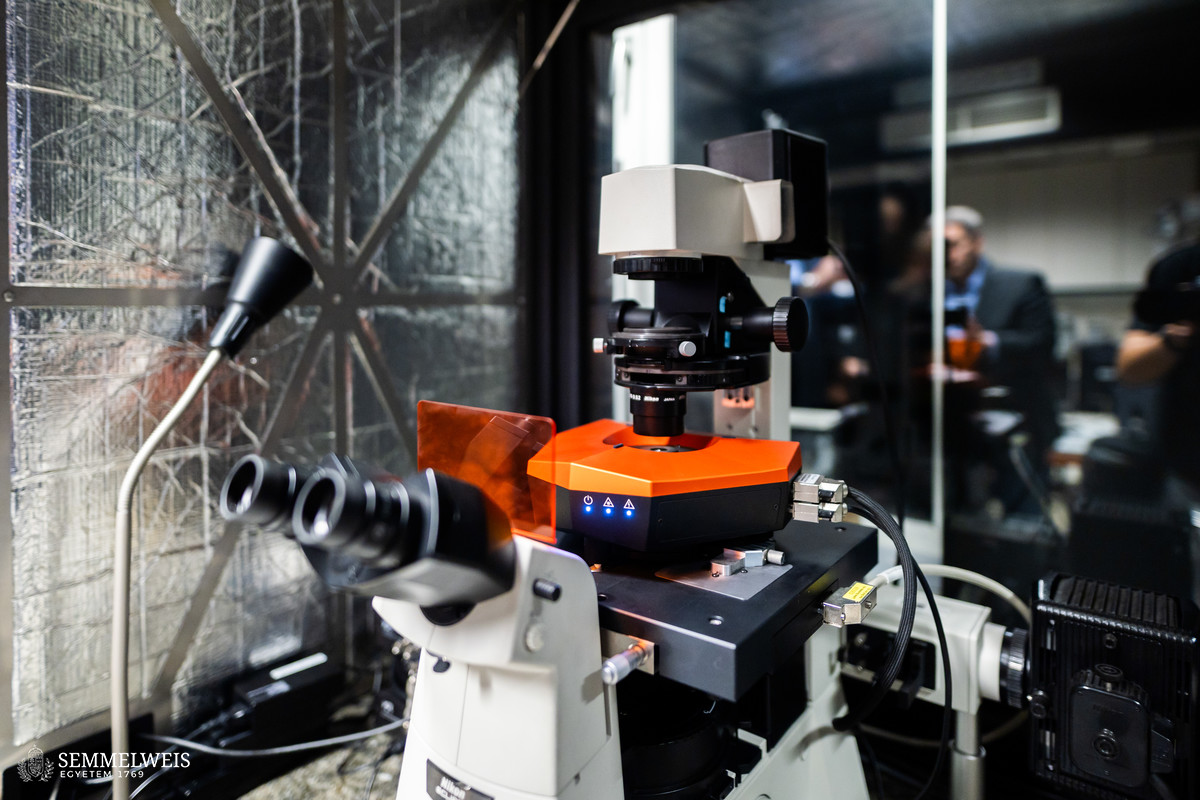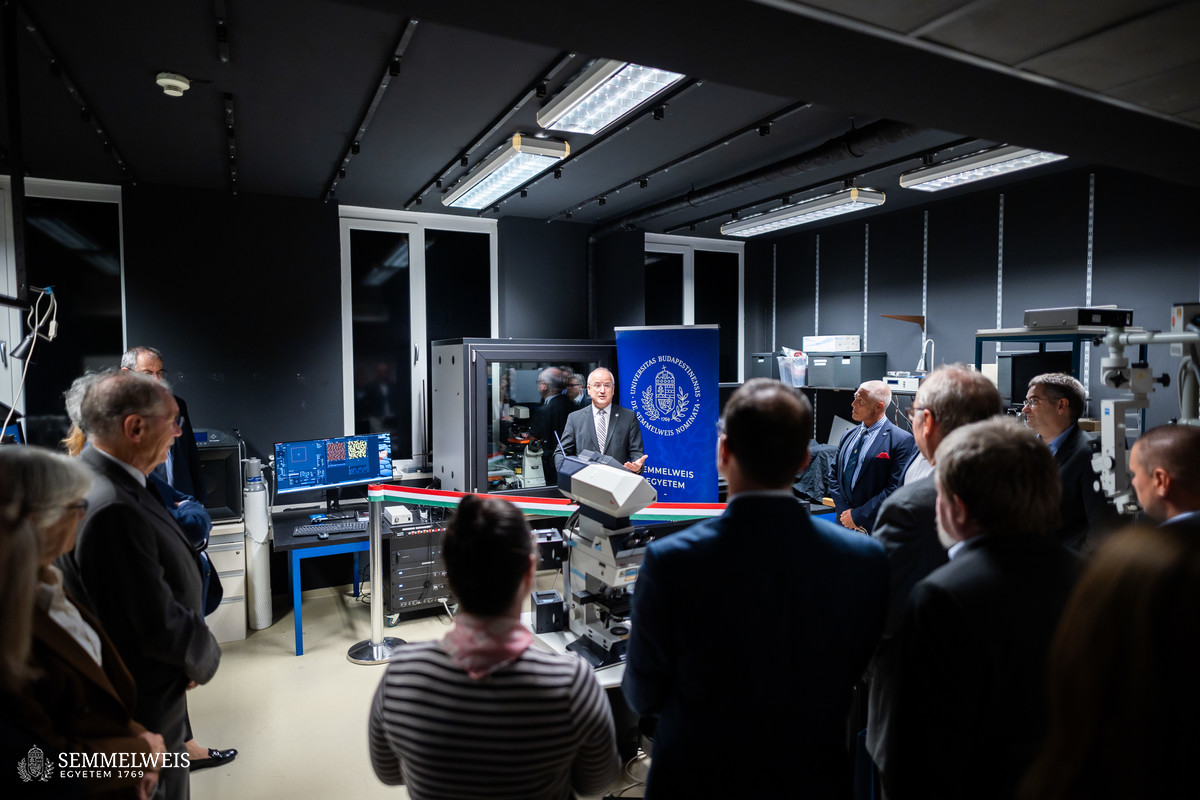New Atomic Force Microscope in the Department of Biophysics and Radiation Biology
2024. október 10
Inaugurated on September 27, the Nanosurf Drive atomic force microscope (AFM) is the latest addition to the equipment fleet of the György Békésy Biophysics Research Center, housed by the Department of Biophysics and Radiation Biology.
The so-called AFM technology has been known and available at Semmelweis University for a long time. For example, in the framework of a 2020 cooperation, a research team of the Department of Biophysics and Radiation Biology used atomic force microscopy to conduct a unique study on the structure of the active and still virulent SARS‑CoV‑2, making it possible to unravel the disease.

The current high-value procurement is of particular importance because the device can be uniquely combined with a previously acquired super-resolution STED microscope. This allows researchers to answer specific biophysical questions by examining the same sample using two separate but simultaneous methods. The device can even be used for atomic resolution, high-speed topological imaging and sensitive force measurements.
At the ceremonial inauguration of the microscope, Dr. Ferenc Bánhidy, Vice-Rector for General Affairs at Semmelweis University, pointed out that whether it was patient care, education, or research and innovation, Semmelweis University’s goal was nothing less than to provide top performance, for which instruments of a similar caliber were indispensable. Speaking of the advantages of the device, he added: “The new super-resolution microscope will provide all the support needed to improve scientific work and research at the university. It will help us improve our rankings and enhance our educational and curative work even more effectively.”
Dr. Attila Mócsai, Vice-Dean for Science at the Faculty of Medicine, praised the vibrant research scene at the Department of Biophysics and Radiation Biology, which was evident not only in the traffic on the corridors leading to the lab, but also in the high-quality publications that stem from there. “I hope that the tool installed at the institute will contribute to many new studies that will be translated into practice to help understand, diagnose, and treat diseases,” he said.
Dominik Ziegler, CEO of Swiss-based Nanosurf, which developed the device, briefly described the company’s journey leading to the Drive AFM microscope: “27 years ago, the founders of our company, which at that time was mainly a manufacturer of microscopes used in public education, were driven by the desire to introduce students to the world of nanotechnology.” This state-of-the-art device represents the concerted efforts of 15 software and 10 hardware engineers, enabling world-class research.

“The imagination of nature is far, far greater than the imagination of man,” said Dr. Miklós Kellermayer, Director of the Department of Biophysics and Radiation Biology, quoting the Nobel Prize-winning physicist Richard Feynman, “so we need special tools to explore its beauty.” He stressed that biophysics was an instrument-intensive discipline, so it required a carefully designed equipment fleet. Compared to the atomic force microscopes available at the institute, the newly installed model not only features several technical innovations but can also be interfaced with optical microscopes, including the super-resolution STED microscope available at the institute. This allows for combined STED-AFM studies, using a unique, spatially and temporally synchronized approach, the director said.
"We want the door guarding the microscope to be open to everyone curious enough and willing to use the device. This is true for the Faculty of Pharmaceutical Sciences, with which we have already carried out joint research, as well as for all the faculties of the university and beyond, for all medical schools in Hungary." – said Dr. Miklós Kellermayer
Following the inauguration ceremony, invited speakers and staff of the Department of Biophysics and Radiation Biology held a mini-symposium on research using atomic force microscopy, its operation, and fields of applications, high-resolution topographic analysis of pharmacological vehicles, the structure of viruses, human dentin, von Willebrand Factor protein, the structural and mechanical properties of extracellular vesicles, and cell stiffness modulation.
Source: Semmelweis News

